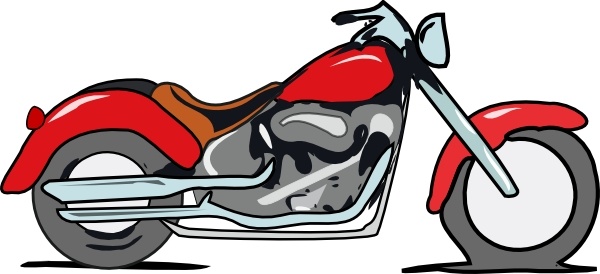Ten Great Lessons Learned from Business History: The 1970s Harley-Davidson/AMF Fiasco
.


.
It was and remains one of the biggest fiascos in American business history…one which almost destroyed a company, a legend and an iconic brand in one fell-swoop…
.
Whether you are a fan of Harleys or not, lessons from this chapter in business history abound; they are lessons which have implications, repercussions and ramifications for all of our businesses, no matter how big or small they may be. I hope you enjoy this original business article which presents a brief history of Harley Davidson, the "AMF fiasco" and business lessons drawn from the epic chapter…
.
.
![]()
.
Company History: Early Years, WWI, the Great Depression and WWII:
.
Harley Davidson was founded in 1903 by William S. Harley and Arthur Davidson, in their hometown of Milwaukee, Wisconsin. The motorcycles the company built quickly caught on with the American public. World War 1 was a watershed event for the company; having realized the benefits of combat mobility, the Department of Defense (the Department of War back then), contracted with Harley-Davidson; the company produced and provided approximately 15,000 bikes for the war effort.
.
Harley’s production numbers plummeted during the opening years of the Great Depression. It soon recovered. Savvy marketing and production practices as well as the introduction of new product lines resulted in Harley Davidson being one of only two American motorcycle manufacturers to survive the Great Depression. Harley’s "Servi-Car," a motorcycle/compact-car hybrid became a mainstay of small-businesses, vendors, delivery drivers and police departments throughout the United States for decades thereafter. In my thinking it was a mark of genius: the Great Depression was probably not the best time to fill up your tank and joyride, but it was the perfect time for an efficient vehicle which was an alternative to a delivery van.
.
Following the outbreak of World War II hostilities, Harley Davidson plants shifter from civilian to war-production; from 1941 to 1945, almost 100,000 motorcycles would be delivered to the US and her allies. The company would receive numerous citations and commendations from the military for "Excellence in Production."
.
.
![]()
.
Company History: Post WWII:
.
Harley Davidson continued to thrive following World War II. Everything appeared to be going the way of the company until several forces conspired…
.
In the second half of the 20th Century, Japanese companies including Yamaha, Honda and Kawasaki began producing and exporting high-quality, affordable motorcycles to the western markets. Streamlined production and efficient business practices ensured a quality and highly-competitive product. Sensing the danger, Harley-Davidson applied to the US Tariff Commission to have a huge tax placed on imported cycles. The result? The company was charged with unfair trade practices. The financial downspin had begun and just around the corner was…
.
.

.
DISASTER!
.
In 1969, amid financial difficulties, Harley-Davidson was bought by the AMF Corporation. AMF, rather unfortunately, was a company whose expertise lay in the fields of producing skis, bowling balls, bicycles and golfing equipment. With no experience in the motorcycle industry, company heads took over…
.
Decline was quick in coming. The AMF/Harley Davidson years were plagued by dubious marketing decisions, bad managerial practices and utter mismanagement. Massive layoffs and worker strikes which ensued damaged the company reputation. A "family" company was now seen as an ugly part of corporate America. Marketing and production decisions were wrested away from seasoned, experienced Harley personnel and given to their inexperience AMF counterparts. Production, inexplicably, was moved from its home-base to York, Pennsylvania. "Tried-and-true" icons were discontinued and new lines were begun with little or no regard for public desire.
.
Profits plummeted as quickly as quality; engines failed, breakdowns were frequent, and the company began investing almost as much time repairing bikes under warranty as it did in producing new models. Products once known for their incomparable quality and workmanship were now widely considered to be inferior to their less-expensive Japanese counterparts in all regards. Reviewers ridiculed the company and its products, the pubic derided the venture and faithful and loyal Harley consumers were up-in-arms! The company almost went bankrupt and the brand which had taken nearly seventy years to cultivate and nurture was almost destroyed wholesale.
.
The "AMF Years" are widely considered to be one of the greatest corporate disasters in American business history.
.
.

.
Practical Business Lessons from the Harley-Davidson/AMF Fiasco:
.
1) Competition and financial hardship are reasons to become more competitive, but cutbacks in quality are unforgivable!
.
2) A successful brand can take months, years, decades or longer to establish, nurture and thrive. Tarnishing the brand typically requires a much shorter period of time.
.
3) Going into a particular business or line of work requires much more ammunition than financial capital. It requires intimate knowledge of product and service, the customer-base, an interest in all of these and a sincere desire to succeed.
.
4) Succeeding in business requires asking your customers what they want, not deciding what you believe they want.
.
5) "If it’s not broke, don’t fix it!" Tough times might require tough measures. They might require belt-tightening, technological innovation, streamlining, increased efficiency and more. But never, never, try to reinvent a perfect wheel. The result is more often than not, an unmitigated disaster!
.
6) Major decisions should be left to those who are experienced, savvy and "in-the-know," not to overambitious outsiders and pencil-pushers who believe they are "in-the-know."
.
7) Never discard a beloved, family-based brand for one which represents or even "smells" of the corporate-world. Loyal consumers and customers rarely tolerate such things.
.
8) Face down your competition in creative and constructive ways, not in ways which are divisive, damaging, non-constructive and which represent complete and utter disregard for your clients and customers.
.
9) Recognize when something is not working and don’t continue for the sake of ego alone. The Harley-Davidson/AMF fiasco continued for the better part of a decade. It was only the fact that the company was eventually re-acquired which ultimately saved it from the business graveyard.
.
10) Beginning, taking over or acquiring a business takes homework, preparation, examination and soul-searching. Those who take the decision lightly are often doomed to failure!
.
.
Image Credits: Motorcycle and Blackboard: all-free-download.com; Globe: Jason Lister at flickr.com; Hindenburg: unlicensed image.
.
Note: "Harley Davidson" and "Harley" are registered trademarks of Harley Davidson USA.
.
.
_______________________________________________
.
.
Yonatan Maisel is a professional writer and published author. He is a history buff who enjoys long walks in the woods with his wife and Canaan dog "Halva", the only breed of dog native to Israel. His business-blog, going strong for ten months now, appears here at http://www.jobshuk.com/, with updates occurring twice-a-week.
.

As cited in this paper!
https://www.researchgate.net/publication/352836735_Strategies_for_branding_the_city_of_Gaborone